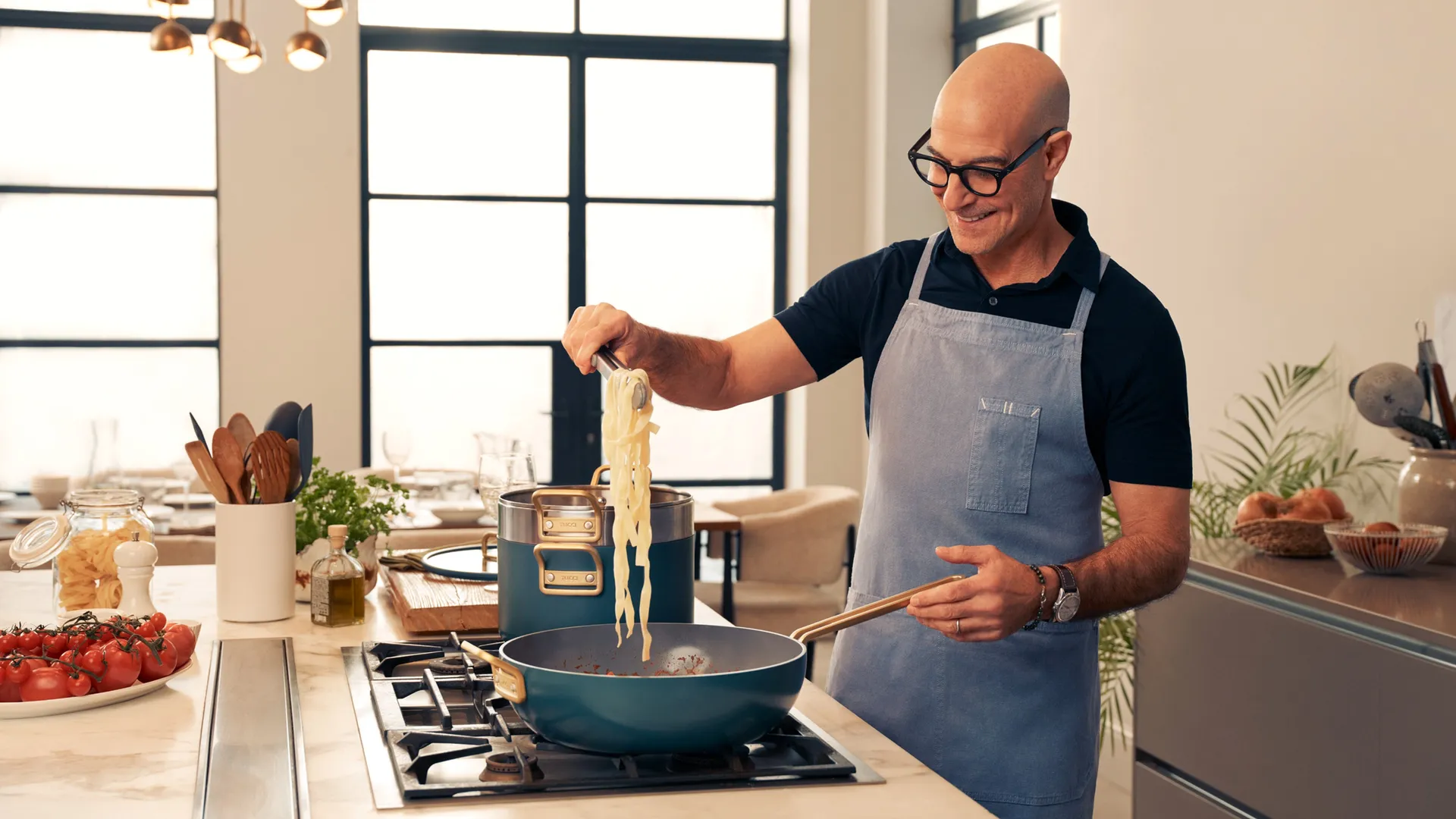
I’ve loved Stanley Tucci ever since he starred in Julie & Julia. His effortless style and passion for good food have made him one of my favorite on-screen personalities (is anyone else watching the new Stanley Tucci cooking show on National Geographic right now?)
That said, as a cookware editor and reviewer, I always approach celebrity kitchenware with a healthy dose of skepticism. When assessing the best non-toxic cookware (which is one of the latest trends for celebs to jump on), I’ve seen many launches that prioritize design over performance. But I’ll admit – Gordon Ramsay’s HexClad pans and the Brooklyn Beckham-endorsed air fryer have recently surprised me with five-star performances. So, I set my judgment aside and gave Stanley Tucci's cookware a go.
To find out if the range is worth its salt, I put two of the collection’s star pieces – The Stanley Pan and the Dutch Oven – to the test with a few classic Italian recipes. Here's how they stacked up.
Specifications
- Made in Italy
- 4.5 quarts (feeds 4–6) or 6.5 quarts (feeds 6–8)
- Thermolon™ Infinite8 ceramic nonstick coating
- PFAS-free non-stick
- Tight-fitting tempered glass lids
- 70% recycled aluminum build
- Compatible with all cooktops (optimal for use on induction)
- Oven and broiler safe to 600°F; lids are oven safe to 425°F.
- Made in Italy
- 6.5 quart capacity
- Thermolon™ Infinite8 ceramic nonstick coating
- PFAS-free non-stick
- 70% recycled aluminum build
- Compatible with all cooktops (optimal for use on induction)
- Oven and broiler safe to 600°F
Materials & design
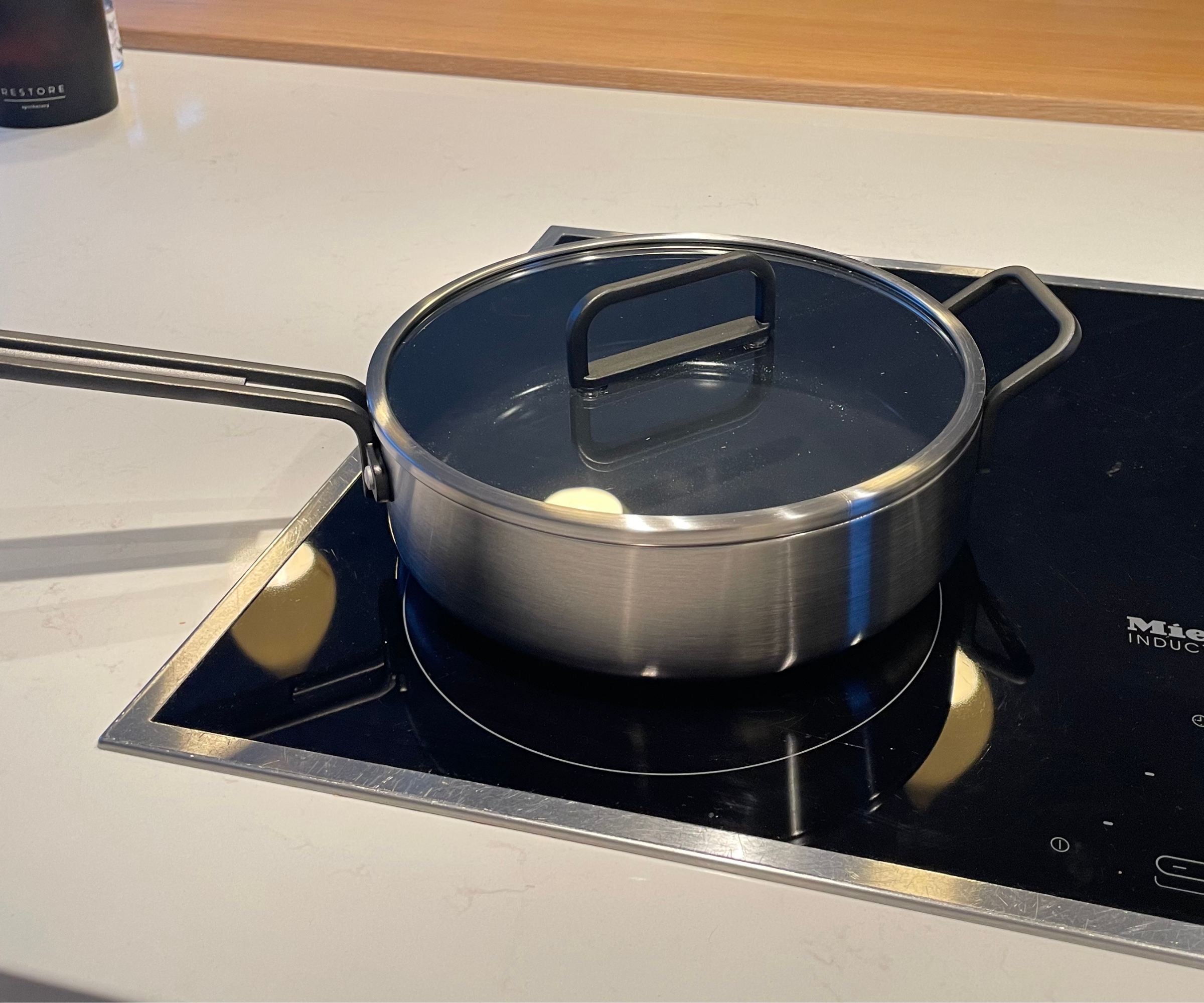
As soon as Stanley Tucci's cookware arrived in my kitchen, the pans looked every bit as chic and polished as Tucci himself. I'd proudly display them on my stovetop.
The Stanley Pan is crafted with at least 70% recycled aluminum – true to GreenPan's sustainability credentials. The lining is ceramic non-stick and infused with diamond particles (yes, diamond), which, apparently, help with heat conductivity and scratch resistance. GreenPan's nonstick is free of PFAS, PFOA, lead and cadmium, so will not release fumes or blister if overheated.
I tested the stainless steel piece, which has a sleek, modern look (and is currently on clearance at Williams Sonoma, with $120 off). But, the newer colorways like Amalfi Sunset and Tuscan Olive are much more covetable. They really capture the sun-drenched Italian palette, bringing that Mediterranean character to your kitchen.
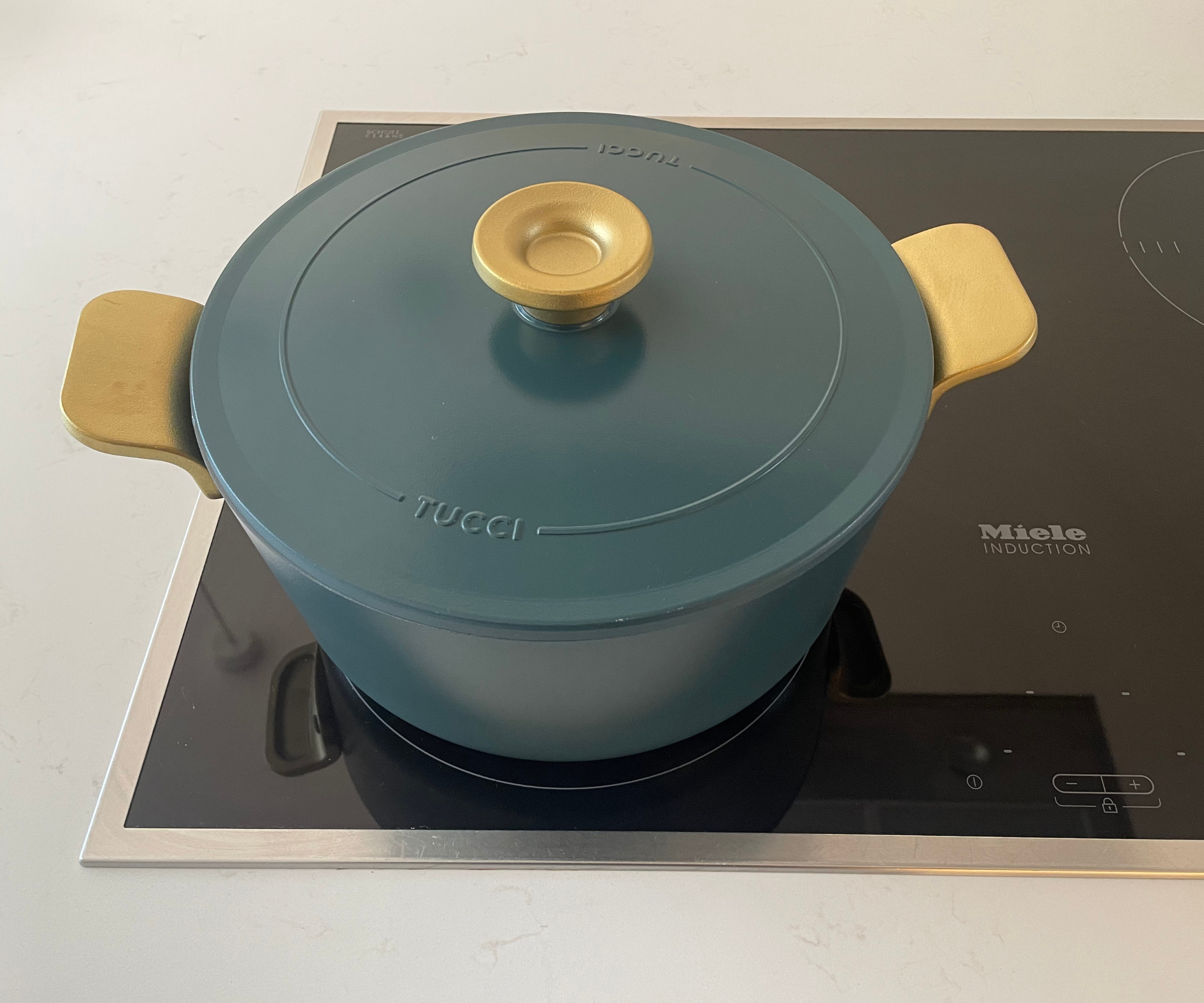
Stanley Tucci's Dutch Oven, which I tried in Venetian Teal, shares the same materials as the Stanley Pan. This pot is also PFAS-free with a diamond-infused ceramic non-stick coating. Both pans come with a stainless-steel induction base, which sits flush on my induction hob – and will also be compatible if you have a gas hob.
The Dutch oven features gold-tone handles, which I think are supposed to feel polished and premium, but in reality, they feel a little cheap. When I picked up the oven, it wasn't too heavy at all, but the flat handles weren't very ergonomic, and I didn't feel confident with the grip. I usually cook with the best Dutch oven on the market, the Le Creuset, so I do have high standards; I'll talk more comparison further down the page.
Cooking performance
1. The Stanley Pan
The Stanley Pan is the star of Stanley Tucci's cookware collection. It is wide and spacious, with rounded edges, making it well-suited to tossing pasta and reducing sauces. I decided to try it with a creamy asparagus and lemon pasta.
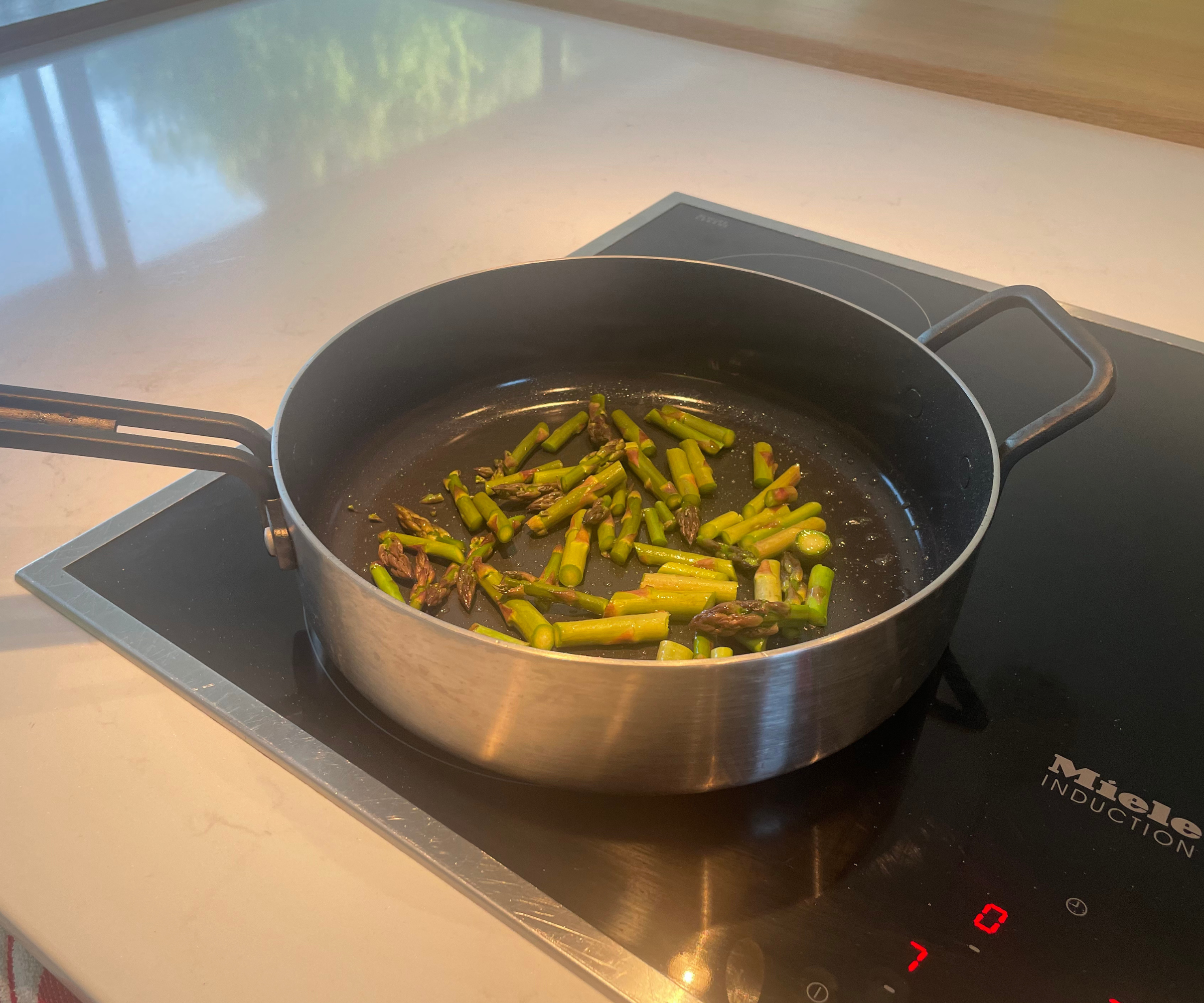
I started by frying delicate, fresh asparagus to test heat responsiveness and the non-stick surface with minimal oil. The pan heated very quickly and the spears easily slid across the pan for even browning. The weight of the Stanley Pan was light and easy to toss, and there was plenty of space for the stems to turn golden quickly.
Then, I added chopped garlic, lemon zest, lemon juice, cream, parmesan, and cooked spaghetti. The sauce reduced quickly, turning the pasta glossy and delicious. Success.
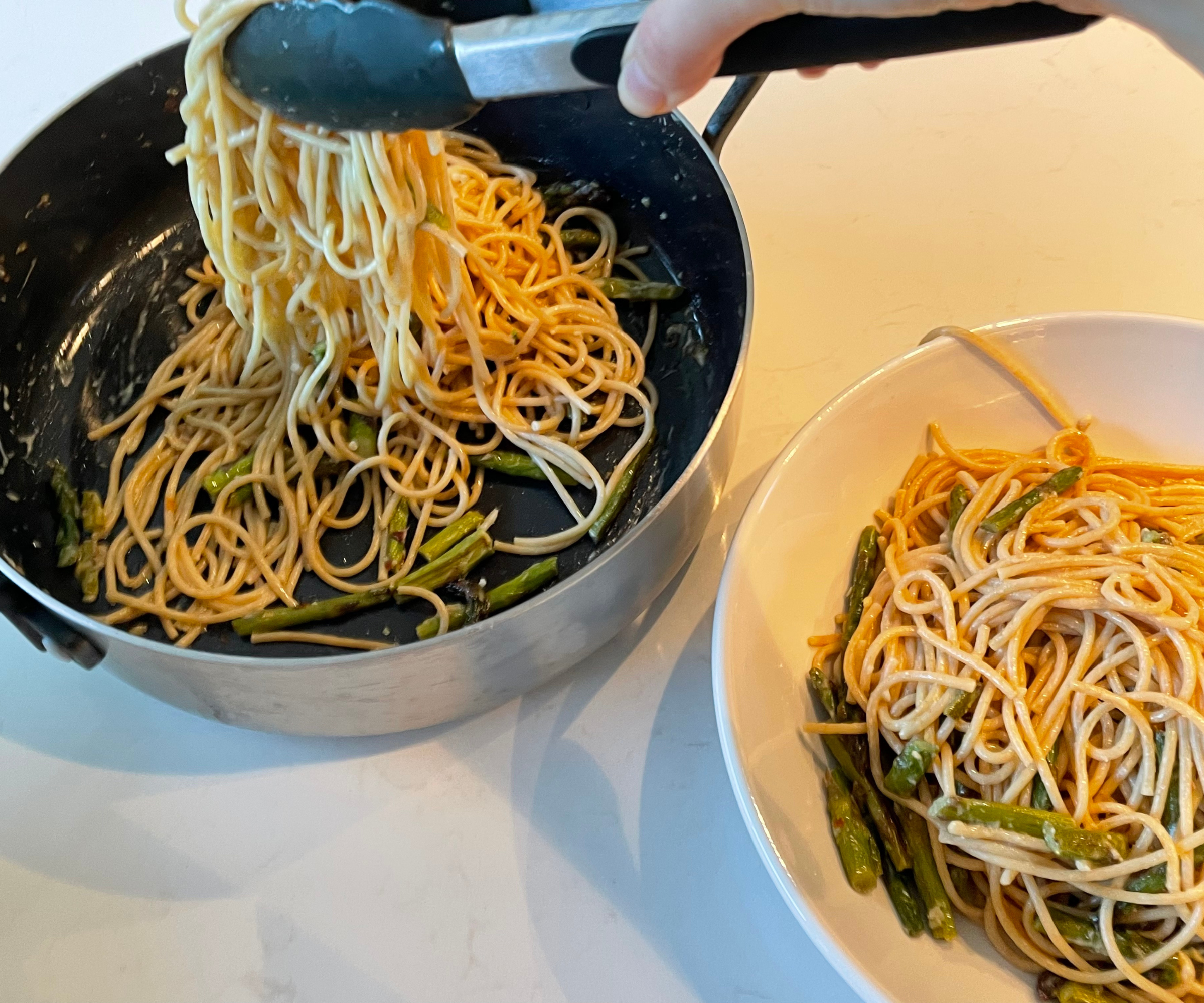
Next, I cleaned the Stanley Pan and returned it to the heat for my second test: garlicky breadcrumb chicken. I added a very thin layer of oil to the pan, before adding in my chicken fillets. They sizzled very gently, and I panicked that the heat wasn't high enough, but stuck to my guns, and after 3-4 minutes on each side, the crumbs turned golden. In fact, a few crumbs caught too much heat and became overly brown.
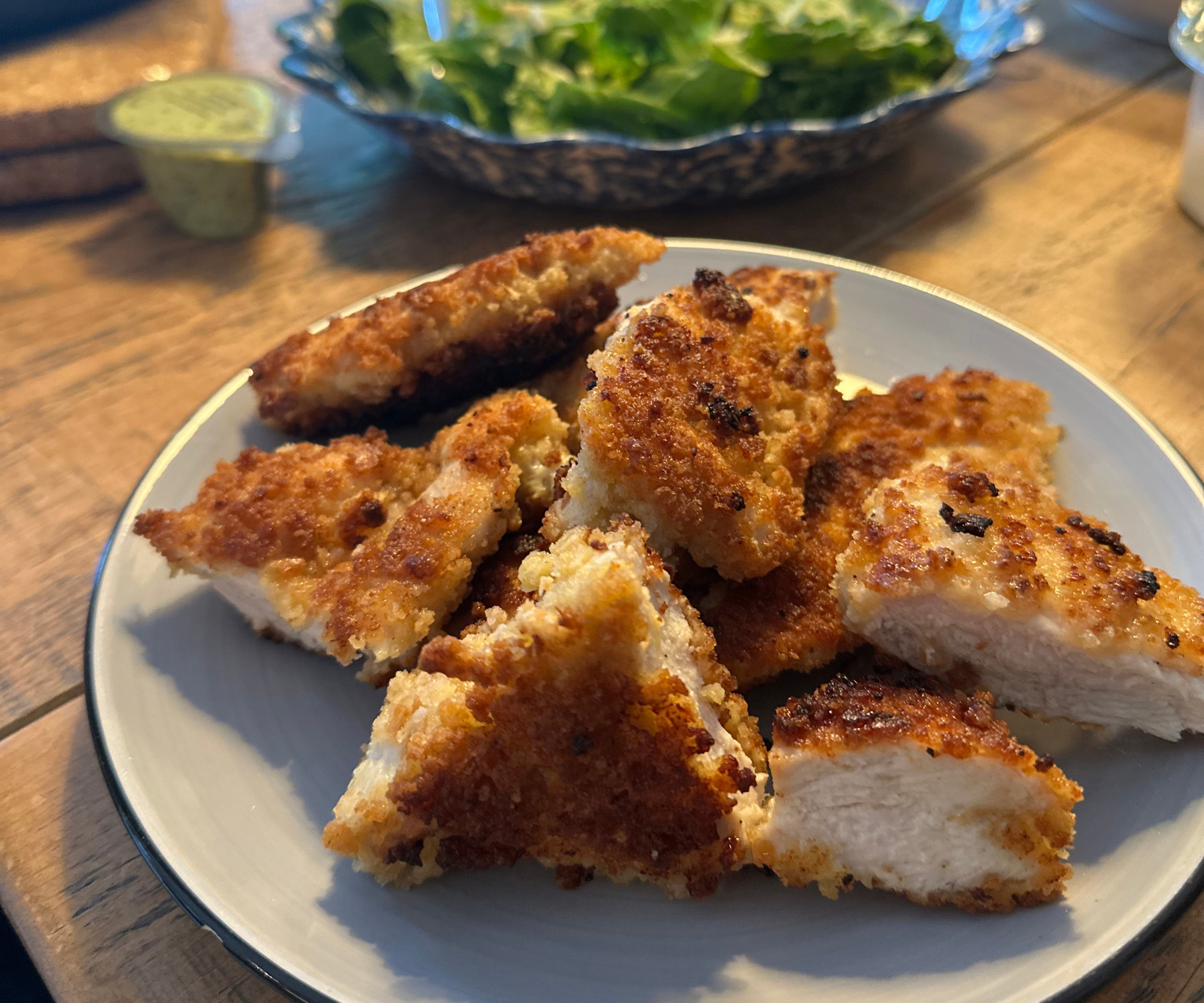
The chicken was juicy and tender inside, and the exterior was crispy. I was also able to pool oil in the rounded sides of the Stanley pan and baste the chicken as it cooked, which definitely helped create that crispy texture. I served the pasta and chicken together with a green salad, which went down really well with my family.
2. The Dutch Oven
To test the Dutch oven, I started with a one-pot pasta dish (actually, a Martha Stewart classic that I've been making for years). I wanted to suss out the Dutch oven's ability to create good, crispy browning on meat, then assess its ability to retain heat efficiently for a slow-simmered dish.
I started by searing pancetta without any oil. Where a poorly designed pan might cause sticking, uneven browning, or burnt spots, the Stanley Tucci cookware's ceramic surface allowed the pancetta to brown and release easily. I then added chopped garlic and walnuts, which toasted nicely.
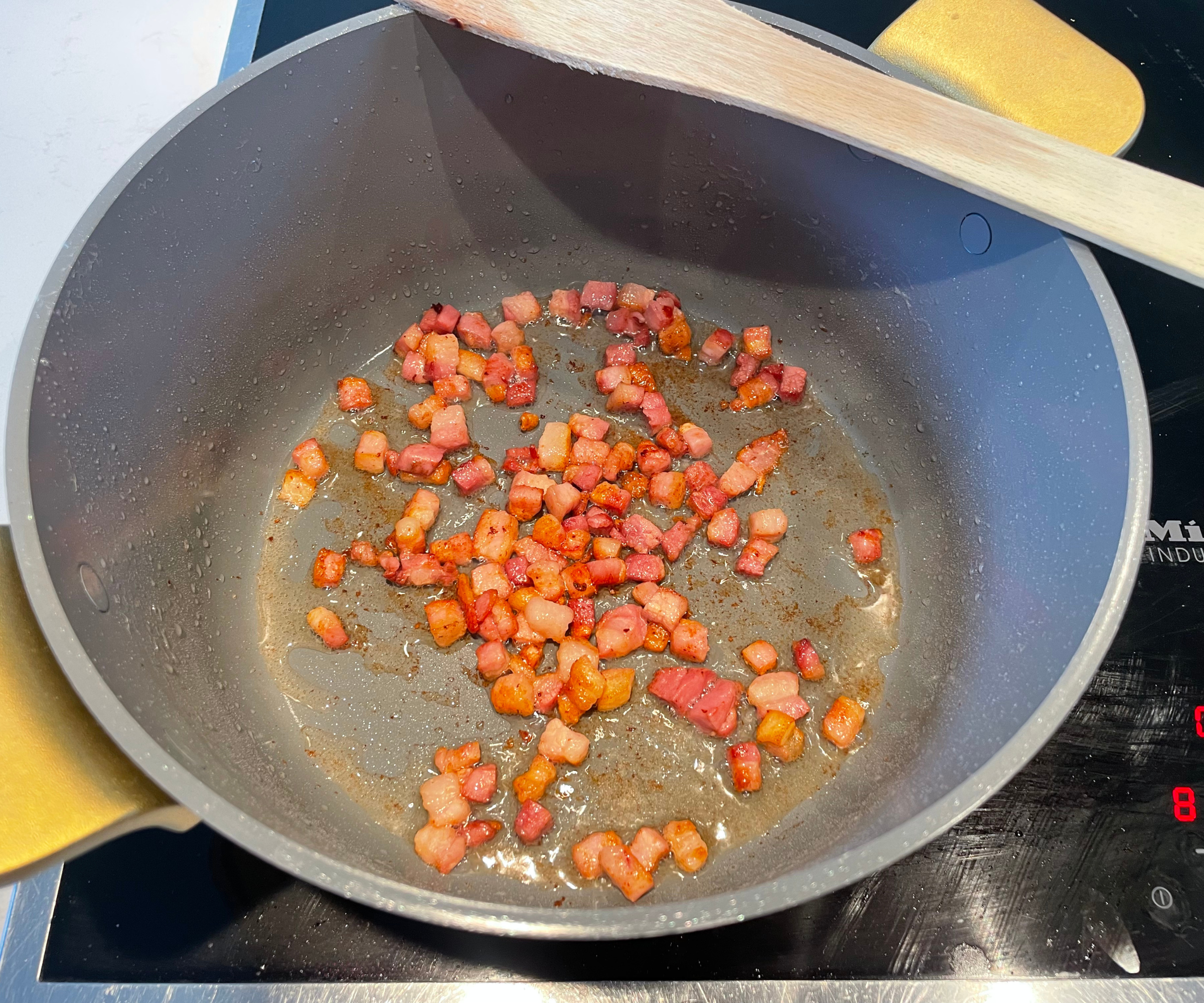
After this, there was a nice bit of fond on the bottom of the pan, which I deglazed with white wine, before adding sliced red onions. These simmered down well, becoming caramelized and soft without burning or sticking.
Finally, I added the volume with handfuls of curly kale and cooked mafalda pasta. The pan allowed plenty of room to combine the ingredients.
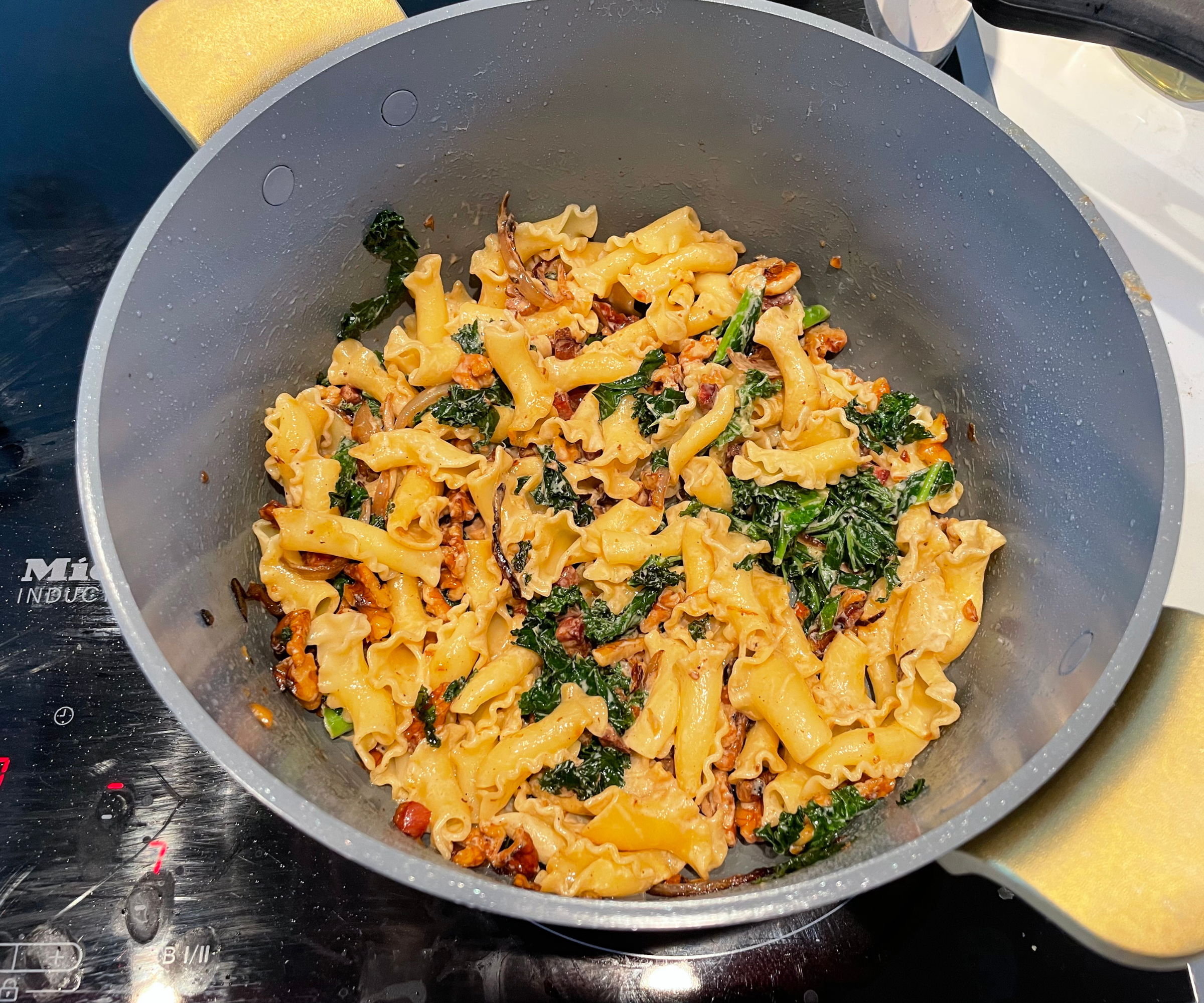
I wanted to serve straight to the table, since Stanley Tucci's Dutch Oven was so pretty and presentable, but unfortunately, the handles were incredibly hot to touch. I struggled to get the pan off the induction stove, even when wearing oven mitts, as I found the handles tricky to hold and grip.
Cleaning & maintenance
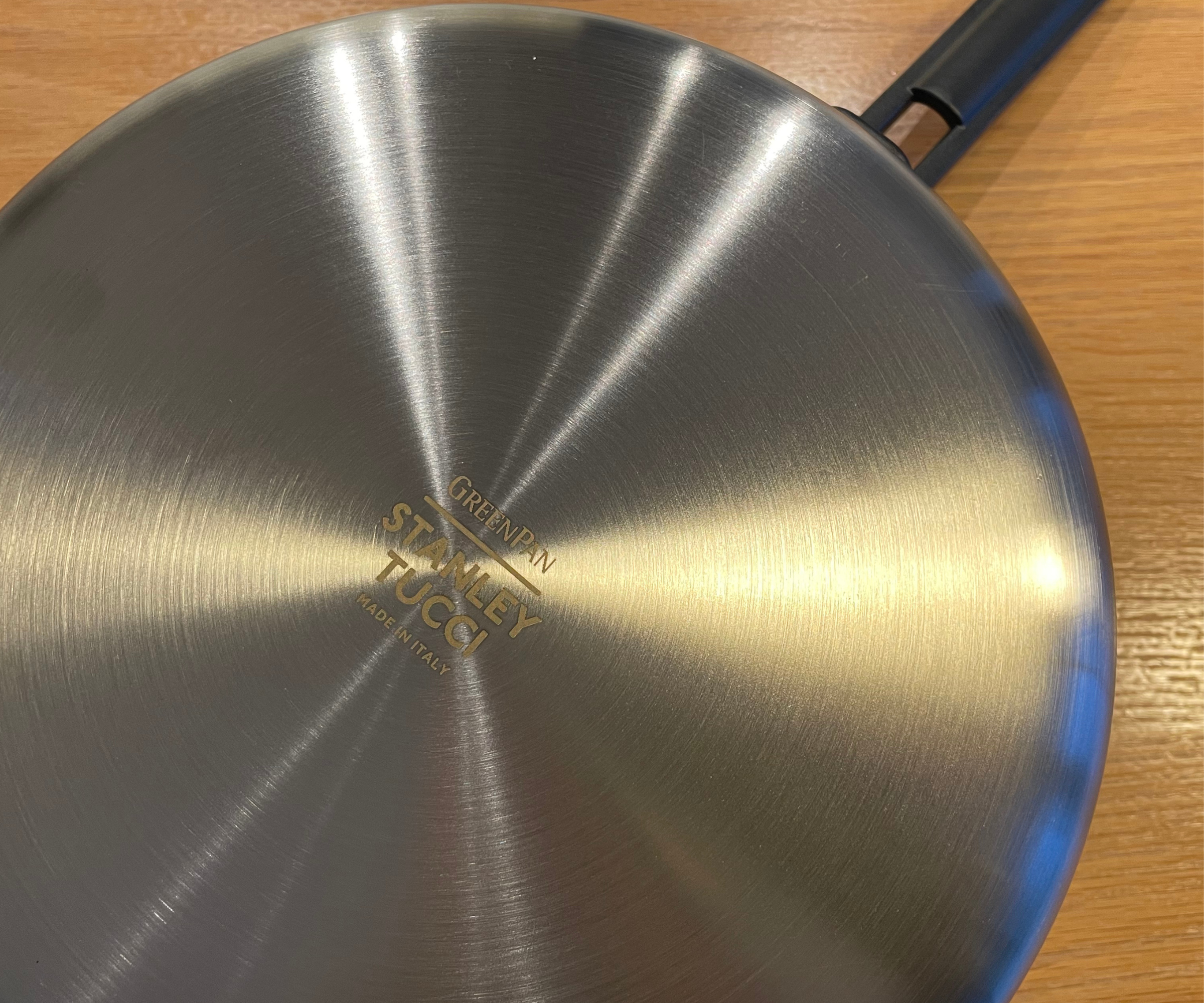
The ceramic non-stick on Stanley Tucci's cookware is a dream to clean; you just need a soft sponge and warm, soapy water. Even after I cooked the breaded chicken and pancetta, there was very little food residue stuck to the pan, and it rinsed away easily. Great news for me, as I'm usually pretty tired after cooking and ready to relax.
However, you do need to be careful with the types of cleaning tools (and cooking tools, for that matter) that you use on ceramic coatings. Abrasive wire sponges and metal spoons will scratch the surface and can destroy the non-stick effect. You also need to be a bit careful about stacking your pans on top of each other – my pan came with a pan protector for storage that reduces scratching and damage to the lining.
I found that the glass lids and steel exterior on my Stanley Pan ended up a bit cloudy with some water spots, so I followed some Homes & Gardens cleaning tips and ended up soaking them in vinegar and polishing them quite a bit to keep the set looking smart. I think the matte, colourful options might have been a better choice for lower maintenance.
How does Stanley Tucci's cookware compare to other brands?
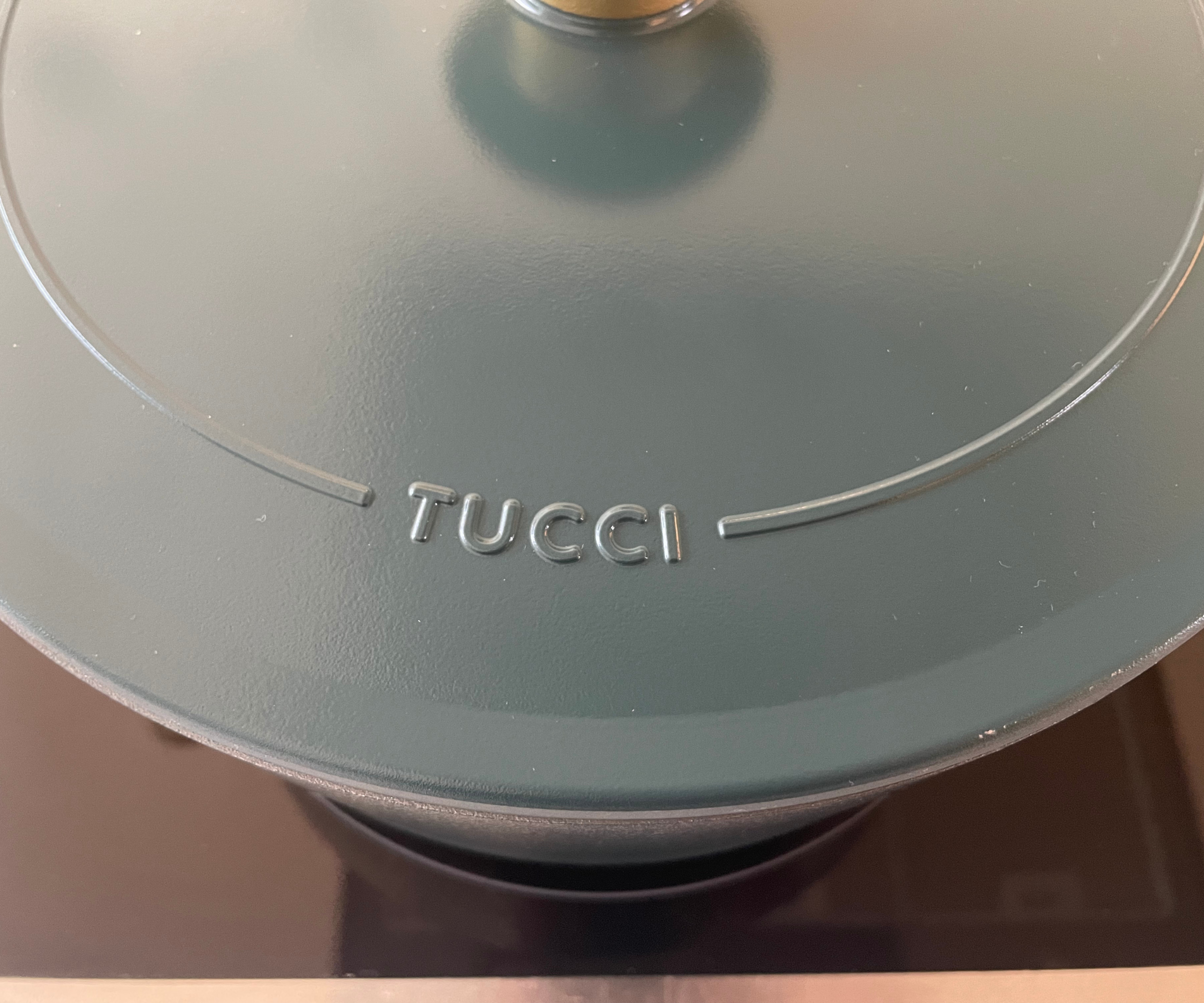
I've tested many of the best non-stick cookware brands, including HexClad, Made In, Our Place, Hestan and more. Stanley Tucci's cookware collab with GreenPan is up there with my favorites for its attractive design and thoughtful non-toxic materials.
I was a big fan of the Stanley Pan; it is versatile and practical, allowing you to cook a variety of recipes, from tossed pasta dishes to fried meats and slow-cooked curries. I think it is a practical design for everyday home cooks, and it saves you from having to buy lots of different pieces. The non-stick is effective and easy to cook on, and it hasn't shown any sign of degradation after 3 months of use on my weekly pasta dishes.
However, I'm not totally sold on the Stanley Tucci Dutch Oven; I much prefer cooking with my Signature Le Creuset Dutch oven. Although Le Creuset isn't 100% non-stick, you really can't beat the sear and heat retention you get with cast iron. I also think it is much more solid and long-lasting. I found the Tucci Dutch oven to be a little cheap in places, and the handles aren't practically designed. I've also noticed some chipping around the ages of the lid after some time of use.
A Le Creuset oven of similar capacity works out at around $100 more, and as a cook, I'd spend that extra money for a durable piece every time.
Should you buy Stanley Tucci's cookware?
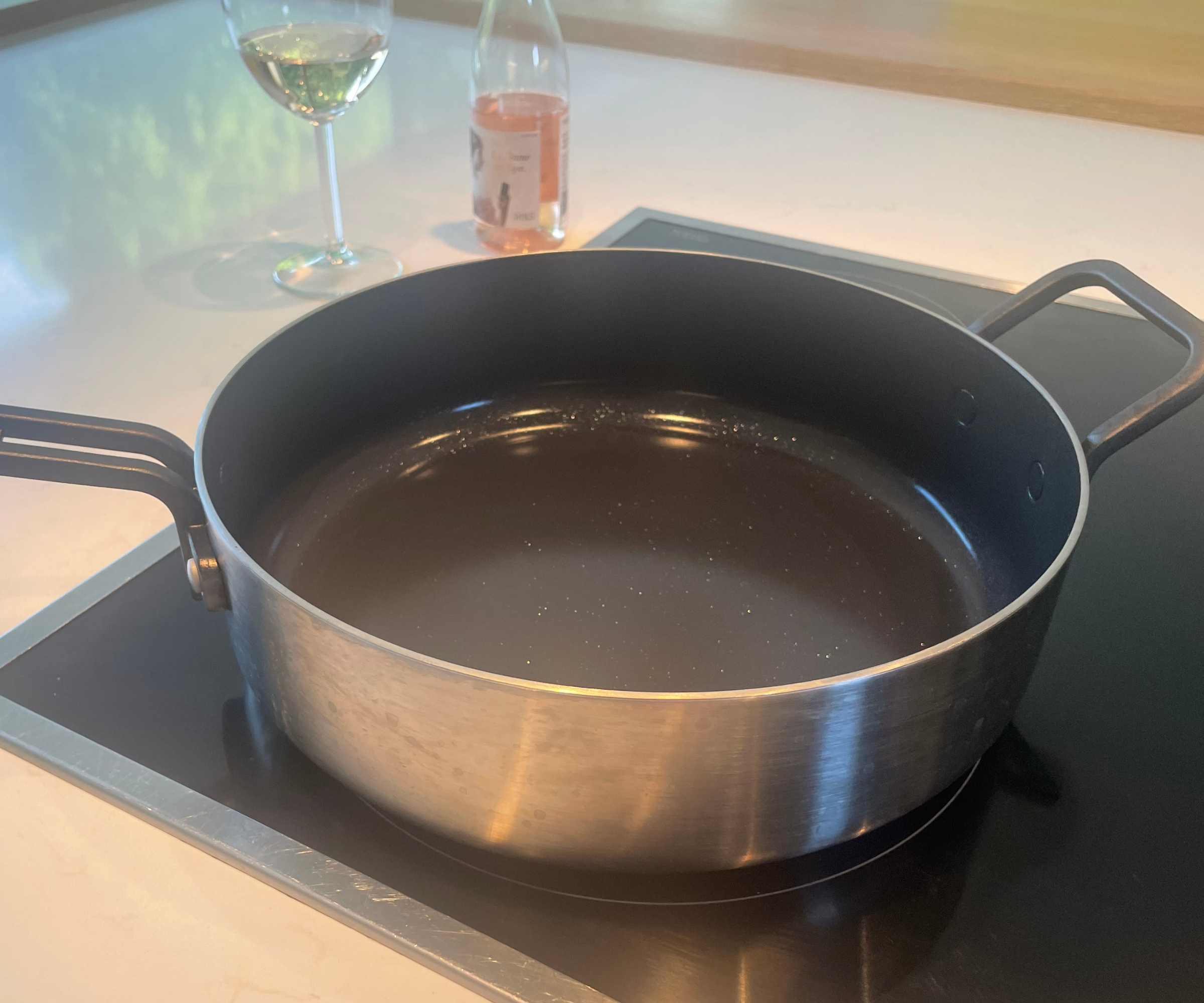
If you’re a fan of Stanley Tucci’s cooking show, there’s a lot to love here. The Stanley Tucci x GreenPan line blends style, sustainability, versatility, and performance in a way that feels genuinely thoughtful.
He won't be replacing my heritage cast iron Dutch oven (sorry, Stanley), but the spacious, well-designed frying pan has become my go-to for pasta dishes and sauces. I just wish I had it in one of the chic, retro colorways inspired by Italian sports cars – then it would never leave my stovetop.
How I test frying pans

The best cookware has to check all the boxes: versatility, manageable weight, brilliant cooking performance and ease of cleaning. At Homes & Gardens, we also look for the best non-toxic cookware, too.
I use each pan for a month to see how it fares over time. I've owned many pots and pans that have been great out of the box, but after prolonged use, they start to stick and destroy my ingredients. There's nothing worse than this, especially when you've forked out your hard-earned cash and need to buy a replacement.
When I'm testing, I'm looking for a pan that can handle everything: from frying an egg to searing a steak with a perfect crust. It should feel balanced in your hand – not so heavy it’s hard to lift, but substantial enough to retain heat evenly for consistent cooking.
I like to test notoriously sticky or delicate recipes, including tofu and sticky cheese like halloumi or paneer. I assess how these work in the pan and the mess they leave afterwards, because no one wants to scrub endlessly after dinner.
Also, I should mention: I trained at a professional cookery school. I'm now a food writer, product tester, and recipe editor, and I've worked with some of the world's leading recipe companies, from Mindful Chef to Deliciously Ella. So, I do have exacting standards when it comes to cookware.







